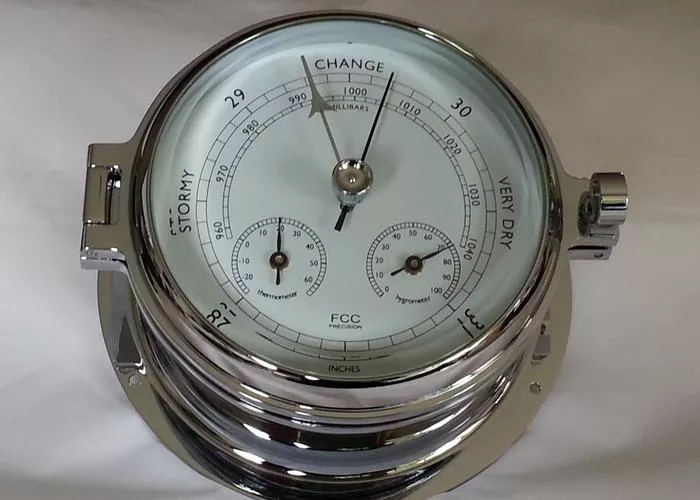A barometer is an essential instrument used to measure atmospheric pressure. The principle behind a barometer is based on the balance of liquid within a tube against the atmospheric pressure acting on a reservoir. While mercury is the most commonly used liquid in barometers, other liquids such as water have been considered. However, water is not a practical choice for barometers due to several inherent physical and chemical limitations. This article explores why water is not suitable for use in a barometer by examining key factors such as density, vapor pressure, surface tension, temperature sensitivity, and practical design constraints.
The Role of Density in Barometer Design
The density of the liquid used in a barometer plays a critical role in determining the height of the liquid column. Mercury, with a high density of approximately 13,600 kg/m³, requires a relatively short column to balance atmospheric pressure. Water, on the other hand, has a much lower density of around 1,000 kg/m³, which significantly affects the column height required for measurement.
Column Height Considerations
A typical mercury barometer features a column height of approximately 760 mm (76 cm) at standard atmospheric pressure (101.325 kPa). Since water is approximately 13.6 times less dense than mercury, the height of a water barometer would need to be proportionally greater. By calculation:
hwater=hmercury×ρmercury/ρwater
hwater=760×13,600/1,000=10,336mm=10.336m
Thus, a water-based barometer would require a column height exceeding 10 meters to function properly. Such a tall and impractical setup makes water an inconvenient choice for barometers.
Vapor Pressure and Evaporation Issues
Vapor pressure is a crucial factor in selecting a liquid for a barometer. It represents the tendency of a liquid to evaporate at a given temperature. Water has a significantly higher vapor pressure than mercury, meaning it evaporates readily under normal conditions.
The Impact of Water’s High Vapor Pressure
At 25°C, water has a vapor pressure of about 3.17 kPa, whereas mercury’s vapor pressure is negligibly low (~0.16 Pa). The high vapor pressure of water leads to two primary issues:
Formation of Water Vapor in the Barometer Tube: The presence of water vapor in the vacuum region of the barometer reduces the accuracy of pressure readings since the total pressure inside the column is the sum of atmospheric pressure and the vapor pressure of water.
Condensation and Phase Changes: Water vapor can condense on the walls of the barometer tube, creating erratic fluctuations in the liquid column and making pressure readings unreliable.
Surface Tension and Adhesion Problems
Surface tension affects how a liquid interacts with the walls of a container. Water has high surface tension (about 72.8 mN/m at 20°C), leading to strong adhesive forces with the walls of a glass tube. These effects result in capillary action, which can distort the liquid column and make it difficult to achieve accurate readings.
Meniscus Formation and Measurement Errors
Water forms a concave meniscus in a glass tube due to its strong adhesive properties. This curvature can introduce measurement errors because the exact reading point becomes ambiguous. Mercury, in contrast, forms a convex meniscus due to its low adhesion to glass, which simplifies reading the barometer scale.
Sensitivity to Temperature Variations
Temperature fluctuations affect the density and volume of liquids, which in turn impact barometer readings. Water, with its high coefficient of thermal expansion, undergoes significant changes in volume and density with temperature variations.
Thermal Expansion and Pressure Measurement
Since water expands or contracts more than mercury with temperature changes, a water-based barometer would exhibit larger fluctuations in readings, reducing reliability. Additionally, freezing and boiling points are important considerations:
Freezing Point (0°C): Water can freeze under cold conditions, rendering the barometer inoperable.
Boiling Point (100°C at 1 atm): Water’s tendency to evaporate and change state at relatively low temperatures makes it unsuitable for long-term use in a barometer.
Practical Constraints and Maintenance Issues
Using water in a barometer introduces significant practical and maintenance challenges:
Growth of Microorganisms: Water supports microbial growth, leading to contamination and degradation over time.
Degassing and Dissolved Air: Water contains dissolved gases that can form bubbles in the column, affecting readings.
Material Compatibility: Unlike mercury, which remains stable, water can react with materials in the barometer, leading to degradation of the instrument.
Conclusion
Water is not a suitable liquid for use in barometers due to its low density, high vapor pressure, significant surface tension effects, and sensitivity to temperature variations. The impractical height required for a water barometer, coupled with its susceptibility to evaporation, freezing, and biological contamination, makes it unreliable for accurate atmospheric pressure measurement. For these reasons, mercury remains the preferred choice for traditional barometers, despite its toxicity concerns. Modern electronic barometers, which do not rely on liquids, have largely replaced traditional mercury barometers for safety and convenience.


